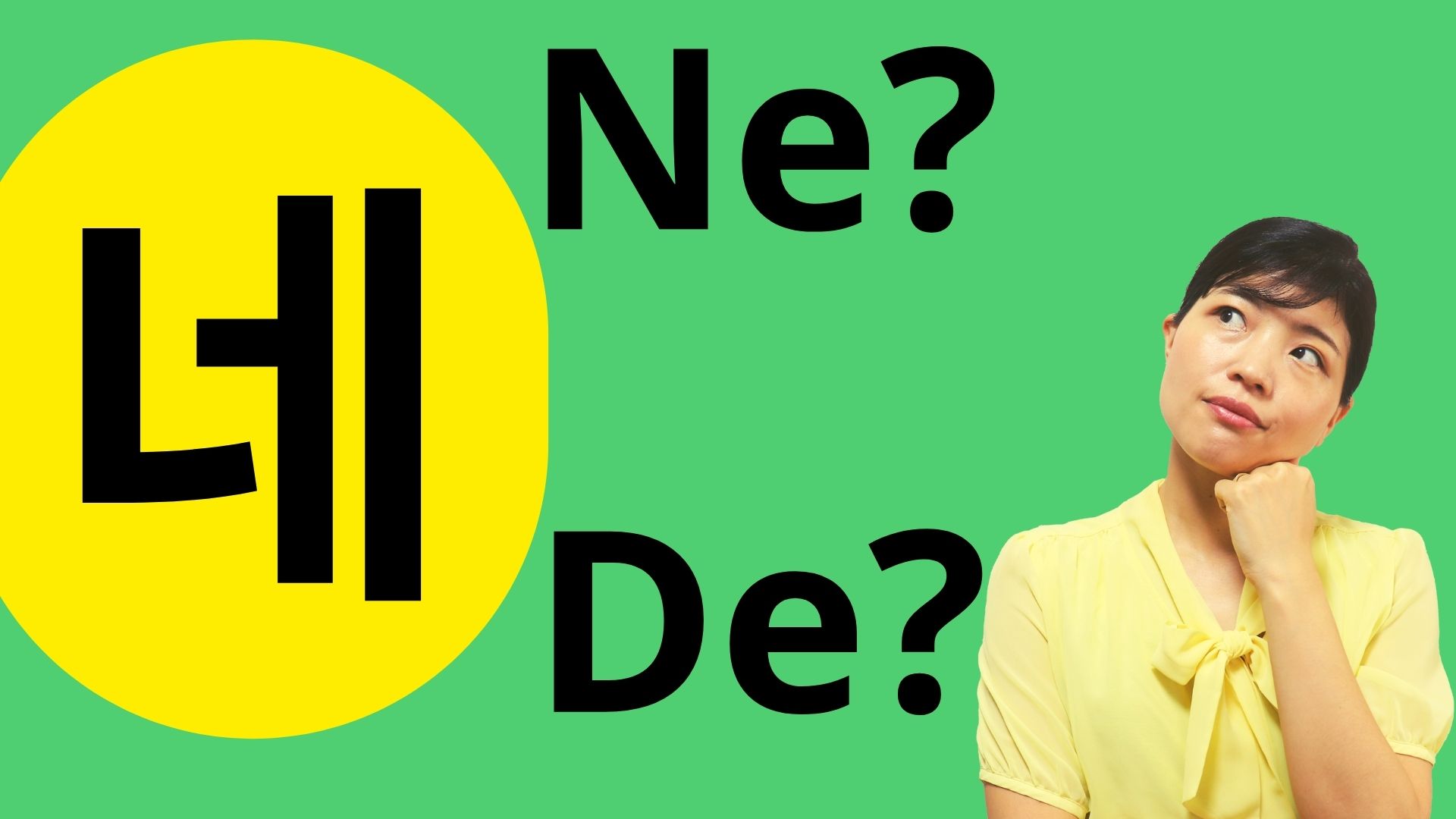안녕하세요. 토미입니다!
Today, I would like to answer a question.
One of my students asked me
In my ears, 네 sounds 데 every time.
뭐 sounds 붜 every time.
Do I have some ear problem?
Can you tell me how to distinguish these?
My answer is that English pronunciation is more distinct and you move your mouth a lot compared to Korean pronunciation.
Korean pronunciation has the same tongue position and mouth movement when you pronounce ㄴ and ㄷ and ㅁ and ㅂ.
That’s why it is hard to differentiate these for untrained ears.
So, it’s not your ear problem. You just don’t get used to Korean pronunciation.
Now, let me explain in more detail.
Why does 네(Ne) aound like 데(De)?
First of all, there is a word “네” meaning “yes” in Korean right?
And you will hear this word every time here and there. 네, 네, 네, 네 everywhere, right?
However, many of Korean learners are confused when a Korean person says “네” because it sounds like “‘De” to your ears.
How does it happen?
The reason is that 네 and 데 have almost the same tongue position in Korean.
When you say “네”, you put your tongue behind your upper teeth. 네, 네, 네
Can you see I put my tongue around here.
And then, this tongue position is exactly the same when Korean people pronounce 데 “De”. 데데데
I did not change the tongue position between 네 and 데.
Since the tongue position is the same, when Korean people say 네, it might also sound like 데 to your ears.
But don’t worry.
For you to understand the difference between 네 ㄴsound and 데 ㄷ sound more clearly, I prepare some words for you. Let’s practice together.
나(I) / 다(everything)
네(yes) / 데(location)
느리다(slow) / 드리다(to give)
늘다(to be extended) / 들다(to take)
놀다(to play) / 돌다(to go round)
Can you see the difference?
Why does 뭐(Mo) aound like 붜(Bo)?
Another confusion many Korean learners have is that “뭐 ” does not really sound like “m” but more like “b, 붜”
It is because the M sound is more distinct in English than Korean.
When you pronounce the M sound in English, you slightly curl your lips like this. M, M, M.
So it is going to be mother, monster, mask…
In contrast, in Korean, you just slightly close your mouth to pronounce ㅁ like 뭐, 뭐, 뭐.
And when you push more air out, it is going to be ㅂsound. 붜붜붜.
So 뭐 sound and 붜 sound have almost same mouth shape to pronounce.
That’s why it is hard to distinguish 뭐 and 붜 unless you really pay attention to it.
But the more you listen to Korean, the more you understand the difference in pronunciation.
So, let’s practice with some Korean words using ㅁ and ㅂsounds.
모이다(to be gathered) / 보이다(to be visible)
마늘(garlic) / 바늘(needle)
말(speech) / 발(foot)
만(ten thousand) / 반(half)
Can you see the difference?
Summary
To summarize, 네 might sound 데, and 뭐 might sound 붜 to your ears because the tongue position and mouth movements to pronounce these sounds are very similar in Korean.
For 네 and 데, you put your tongue behind your upper teeth 네, 데.
And For 뭐 and 붜, you just slightly close your mouth for 뭐 and 붜.
Almost the same mouth movement.
So when Korean people speak fast or when they mumble, it could be hard for Korean learners to distinguish the sounds.
However, the more you hear Korean, the more you can catch the differences.
I hope you are going to have a lot of fun learning Korean.
그럼 오늘도 행복 가득, 웃음 가득한 하루 되세요! 한국어 화이팅, 화이팅, 화이팅!!



